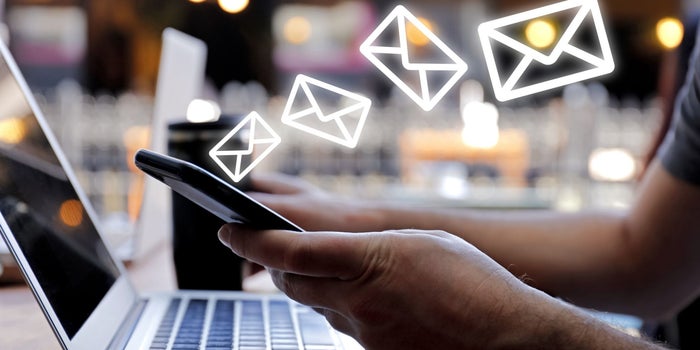The previous section has given you the definition and the importance of email marketing. In this second part, we will show you how to start with email marketing. Now let’s start.
Getting started with email marketing
Even you are just the beginners in email marketing or you are already master in this, you still begin with three basic steps. They are choosing an email marketing service, establishing a plan to generate new subscribers, and understanding how to send emails legally.
Choose an email service provider
This is the first step when you get started with email marketing. There are so many robust and cost-effective email marketing tools to choose from. Read carefully the review of all platforms then pick the most suitable for your online business.
Here are 5 of the best email marketing services for ecommerce stores that we recommend for you:
- Klaviyo: It is one of the few email marketing services designed specifically for ecommerce. With the powerful segmentation tools, Klaviyo will help you segment better.
- Omnisend: With robust automation and workflows, omnisend will be the right choice for merchants who don’t want to spend a lot of time building automated email campaigns.
- Conversio: This platform will make it easy for you to keep customers loyal. It is engaged by encouraging them to review and post their own photos of your products, and by automating follow-up emails and customer feedback requests.
- Rare.io: Difference from other platforms, Rare.io focuses on sending individual, personalized emails, providing Amazon-level product recommendations without any work on the user’s end.
- Remarkety: Remarkety’s email marketing service offers smart product recommendations driven by AI, and its software boasts a 99% delivery rate.
Building your email list
You should start growing your list of subscribers as soon as you can, even before you launch your business. One important thing to know before you start building your email list is that you need to follow up with prospects and customers over time. To do that, subscribers need to “opt-in” to hear from you. There are five ways you can encourage them to do so.
1. Set up a pre-launch page
Before you launch your official store, you can set up a basic landing page on your domain that invites visitors to stay informed by entering their email address. By this way, you can collect your potential customer email address. In the pre-launch page, let write some exciting about your upcoming product. In addition, you can offer strong incentives for early adopters where it makes sense (e.g., early-bird customers get 20% off on launch day).
2. Collect emails from sales and customer accounts
One thing that is really valuable for ecommerce businesses, it is customer accounts. Why we say that? Because it requires shoppers to share relevant information, including their email address and make purchasing history easier to track.
On the other side, it also makes customers feel frustrated to create an account for a single shopping destination. To solve this problem, you do not force your shoppers to create an account to buy. Instead, offer an invitation to encourage them to activate an account after their first order has been placed.
Have you take a look at the previous part: Email Marketing: The Ultimate Guide to Ecommerce Businesses Part 1
3. Place opt-in forms across your site

To growth your list, you need to ask people to register directly. Therefore, the best place to ask is where they’re already engaged, on relevant pages across your online store. Just make sure you do not affect your design and leave a bad first impression. Try placing your registration form in these locations first:
- Your header, navigation, or footer. Even though these locations seem to have lower overall conversion rates than a dedicated landing page. But, over time the number of subscribers they generate will increase, especially if you provide an incentive like a first-time customer discount.
- Your About Us page. Email is just a mechanism—your brand and offers are the deciding factors in encouraging subscribers to give you their email. If your About Us page is doing its job selling your company’s vision, it’s a great place to encourage customers to subscribe.
- Your blog or resource pages. If you’re using content marketing to educate your customers and rank in search engines, you’re already attracting prospects looking for information, so including a targeted opt-in form inline or in the sidebar of your blog can help move them down the funnel.
- A pop-up form. Try setting pop-ups to trigger when a visitor is slipping away, so you don’t interrupt their experience. Exit-intent pop-ups only show when a visitor moves their mouse off your website, toward the search bar or back button, giving you a second chance to collect their email. Try apps like Privy, Sumo, or JustUno on the Shopify App Store to create your pop-ups.
4. Accelerate sign-ups with lead magnets
Online businesses often assume that receiving a newsletter is enough to attract subscribers. Marketing is about messaging and measurement, and “get our weekly emails” is not a compelling message. So considering creating a real offer as an additional incentive for visitors to share their email. Here are a few ways to approach:
- Offer exclusive deals and discounts.
- Run sweepstakes or a contest.
- Access to educational content.
5. Ask for emails in person
Besides online methods for collecting customers’ email, you also can ask for your customer directly in the real world. There are a lot of opportunities for you to do that, for example, you sell your products through pop-up shops, take one-off orders from friends, or already have a physical storefront, ….
Send emails legally
When you send an email to a customer, you are trying to build a relationship with his/her. This relationship must be based on permission, and you also need to obey the law. If you neglect the law, you could face serious fines. TRy to put yourself fit in the following rules and regulations:
- CAN-SPAM. The Controlling the Assault of Non-Solicited Pornography and Marketing Act. CAN-SPAM sets rules around commercial email.
- GDPR. The General Data Protection Regulation is meant to protect personal data for individuals within the European Union.
- CASL. Canadian Anti-Spam Legislation. It helps protect Canadians while ensuring that businesses can continue to compete in the global marketplace.
This is not the end of the series of guide to ecommerce email marketing. Let look forward to the final part.



